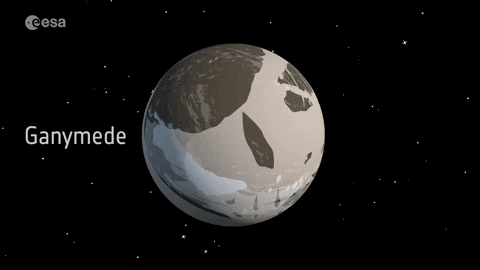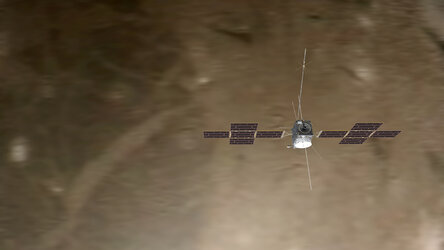Accept all cookies Accept only essential cookies See our Cookie Notice

About ESA
The European Space Agency (ESA) is Europe’s gateway to space. Its mission is to shape the development of Europe’s space capability and ensure that investment in space continues to deliver benefits to the citizens of Europe and the world.
Highlights
ESA - United space in Europe
This is ESA ESA facts Member States & Cooperating States Funding Director General Top management For Member State Delegations European vision European Space Policy ESA & EU Space Councils Responsibility & Sustainability Annual Report Calendar of meetings Corporate newsEstablishments & sites
ESA Headquarters ESA ESTEC ESA ESOC ESA ESRIN ESA EAC ESA ESAC Europe's Spaceport ESA ESEC ESA ECSAT Brussels Office Washington OfficeWorking with ESA
Business with ESA ESA Commercialisation Gateway Law at ESA Careers Cyber resilience at ESA IT at ESA Newsroom Partnerships Merchandising Licence Education Open Space Innovation Platform Integrity and Reporting Administrative Tribunal Health and SafetyMore about ESA
History ESA Historical Archives Exhibitions Publications Art & Culture ESA Merchandise Kids Diversity ESA Brand Centre ESA ChampionsLatest
Space in Member States
Find out more about space activities in our 23 Member States, and understand how ESA works together with their national agencies, institutions and organisations.
Science & Exploration
Exploring our Solar System and unlocking the secrets of the Universe
Go to topicAstronauts
Missions
Juice Euclid Webb Solar Orbiter BepiColombo Gaia ExoMars Cheops Exoplanet missions More missionsActivities
International Space Station Orion service module Gateway Concordia Caves & Pangaea BenefitsLatest
Space Safety
Protecting life and infrastructure on Earth and in orbit
Go to topicAsteroids
Asteroids and Planetary Defence Asteroid danger explained Flyeye telescope: asteroid detection Hera mission: asteroid deflection Near-Earth Object Coordination CentreSpace junk
About space debris Space debris by the numbers Space Environment Report In space refuelling, refurbishing and removingSafety from space
Clean Space ecodesign Zero Debris Technologies Space for Earth Supporting Sustainable DevelopmentLatest
Applications
Using space to benefit citizens and meet future challenges on Earth
Go to topicObserving the Earth
Observing the Earth Future EO Copernicus Meteorology Space for our climate Satellite missionsCommercialisation
ESA Commercialisation Gateway Open Space Innovation Platform Business Incubation ESA Space SolutionsLatest
Enabling & Support
Making space accessible and developing the technologies for the future
Go to topicBuilding missions
Space Engineering and Technology Test centre Laboratories Concurrent Design Facility Preparing for the future Shaping the Future Discovery and Preparation Advanced Concepts TeamSpace transportation
Space Transportation Ariane Vega Space Rider Future space transportation Boost! Europe's Spaceport Launches from Europe's Spaceport from 2012Inside the Galilean moons
Thank you for liking
You have already liked this page, you can only like it once!
This animation shows the interior structure of the four Galilean moons of Jupiter: Io, Europa, Ganymede and Callisto. While Io is an active volcanic world with a magma ocean below its crust, the other moons are icy, and are thought to host subsurface liquid oceans that will be explored in detail by ESA’s Jupiter Icy Moons Explorer.
Europa has a dynamic icy crust overlying what is thought to be a liquid water ocean. It also has a rocky mantle and solid core. Juice will search for liquid water below the most active sites observed on the surface. The spacecraft will study material exchange between the interior and the surface, as well as measure the moon’s gravity field to better define its structure and layers.
Ganymede has an icy crust with evidence of a subsurface liquid ocean overlying an icy mantle, a rocky mantle, and core. Juice will characterise the icy crust and the extent of the subsurface ocean. It will also measure Ganymede’s intrinsic magnetic field in great detail. It is the only moon in the Solar System to generate its own magnetic field, which has complex interactions with Jupiter’s own vast magnetic field, and Juice will study the relationship between the two.
Callisto has an icy crust and is suspected to have a subsurface liquid ocean with its internal core likely a mix of ice and rocks. Here Juice’s focus will be the understanding of the interior structure and the detection of the putative subsurface ocean.
Understanding the state of the moons’ interiors, and in particular if they host liquid water, will help answer important questions about the habitability potential of these moons, and of similar exoplanet systems elsewhere in our Universe.
-
CREDIT
ESA/ATG medialab -
LICENCE
ESA Standard Licence
-
Closed captions available Captions and subtitles are available (automatically generated by YouTube) - select your language using the YouTube player controls. A non-YouTube version is available using the 'download' button above.
-
Animation
-
-
-

Inside Ganymede

Juice orbits around Ganymede (artist’s impression)

Juice orbits around Ganymede (artist’s impression)

Juice orbits around Ganymede (artist’s impression)















 Germany
Germany
 Austria
Austria
 Belgium
Belgium
 Denmark
Denmark
 Spain
Spain
 Estonia
Estonia
 Finland
Finland
 France
France
 Greece
Greece
 Hungary
Hungary
 Ireland
Ireland
 Italy
Italy
 Luxembourg
Luxembourg
 Norway
Norway
 The Netherlands
The Netherlands
 Poland
Poland
 Portugal
Portugal
 Czechia
Czechia
 Romania
Romania
 United Kingdom
United Kingdom
 Slovenia
Slovenia
 Sweden
Sweden
 Switzerland
Switzerland

























